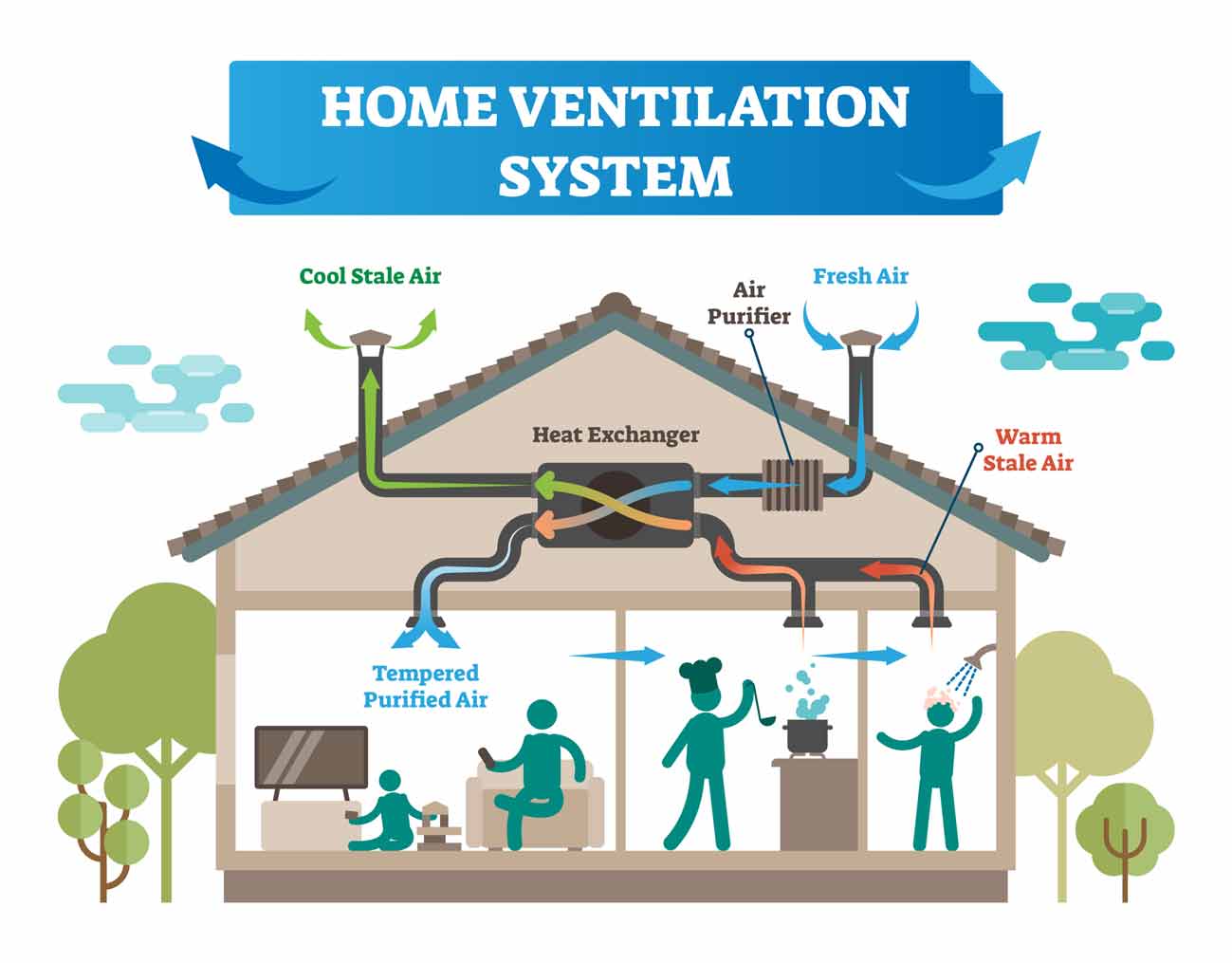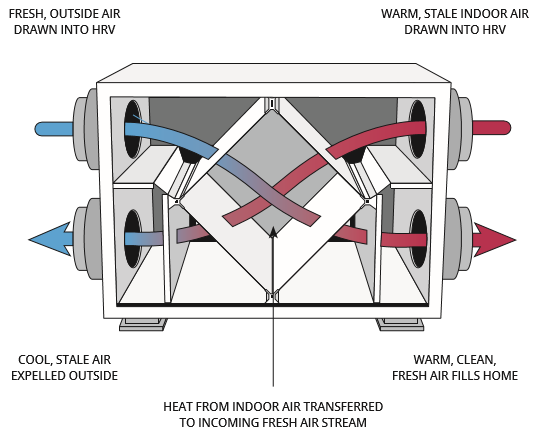The Definitive Guide to HRV Setup in Residential Spaces
Wiki Article
Discovering the Advantages of Heat Recovery Ventilation for Energy Effectiveness in Homes
Heat Recovery Ventilation (HRV) systems provide homeowners a sensible technique to boosting energy effectiveness. By recovering warm from outbound air, these systems can significantly lower home heating and cooling costs. Additionally, they give a steady supply of fresh air, enhancing indoor air quality and comfort degrees. As property owners think about sustainable options, understanding the nuances of HRV systems comes to be significantly essential. What factors should one review before making such a financial investment?Recognizing Heat Recovery Ventilation Solutions

How HRV Boosts Indoor Air Top Quality

Power Financial Savings: The Economic Advantages of HRV
Making best use of power efficiency, heat recovery ventilation (HRV) systems supply considerable economic advantages for house owners. By recovering and reusing warm from exhaust air, HRVs noticeably decrease heating and cooling expenses. This innovation can lead to power savings of approximately 30%, depending upon climate and usage patterns. Homeowners usually notice reduced utility bills shortly after installation, making HRVs an economically sensible investment over time. Additionally, several regions supply incentives or discounts look what i found for energy-efficient upgrades, better enhancing the economic allure. As energy rates remain to rise, the cost-effectiveness of HRVs ends up being progressively clear. Overall, the incorporation of HRV systems not only promotes power effectiveness however also adds to long-lasting financial cost savings for houses.The Ecological Influence of Heat Recovery Ventilation
A substantial environmental benefit of heat recovery ventilation (HRV) systems depends on their capability to lower total power consumption. By redeeming heat from exhaust Check Out Your URL air and transferring it to incoming fresh air, HRV systems reduce the demand for energy-intensive home heating and cooling down approaches. This decrease in power demand adds to lower greenhouse gas discharges, as much less nonrenewable fuel source is called for to preserve comfortable indoor temperature levels. In addition, HRV systems boost indoor air top quality by efficiently trading stale air with fresh exterior air, reducing dependence on mechanical cooling systems that can hurt the setting. Generally, the execution of HRV systems supports lasting living methods and straightens with international efforts to battle environment modification by advertising energy performance in household setups.
Choosing the Right HRV System for Your Home
How can home owners ensure they choose the right heat recovery ventilation (HRV) system for their requirements? First, they should assess their home's dimension and format, as these elements influence air flow requirements. Next, assessing the system's efficiency ratings is crucial, as higher rankings indicate better efficiency and power savings. House owners need to additionally think about installment and upkeep costs, contrasting various brand names and versions for value. In addition, it is essential to review noise degrees, as some systems operate even more silently than others. Consulting with heating and cooling specialists can give tailored suggestions based on details home problems. Analyzing user evaluations and warranties can help in making a notified choice, making sure that the selected HRV system effectively enhances indoor air top quality and energy effectiveness.Often Asked Questions

Exactly how Often Should I Clean or Keep My HRV System?
The regularity of cleansing or maintaining a heat healing air flow (HRV) system usually depends upon use and ecological elements. Usually, it is advisable to do maintenance every 6 months to ensure peak efficiency and air top quality.
Can HRV Equipments Help In Reducing Moisture Levels Inside?
HRV systems can properly minimize indoor humidity degrees by trading stale, damp air with fresh, Resources drier air from outside. HRV Heat Recovery Ventilation. This process helps preserve a well balanced interior environment, improving comfort and stopping moisture-related issues
What Is the Lifespan of a Typical HRV System?
The life-span of a regular heat recovery ventilation (HRV) system varies, generally lasting between 10 to 15 years. Normal upkeep can prolong its effectiveness and operational life, making sure peak efficiency throughout its use period.Are There Any Sound Issues With HRV Equipments?
Noise interest in HRV systems can arise, particularly from follower operation. Nevertheless, lots of modern devices are developed to decrease sound levels, guaranteeing they run silently while maintaining efficiency, which addresses potential disturbances in living environments.Can I Set Up an HRV System Myself, or Do I Need a Professional?
The specific contemplated whether to mount the heat recovery ventilation (HRV) system directly or work with a specialist. Typically, while DIY installation is feasible, knowledge warranties correct performance and compliance with regional structure codes, boosting system effectiveness.Report this wiki page